Leonora Carrington: The Woman They Coulndn't Destroy
She had everything an English aristocrat could want. Then Leonora Carrington chose love over luxury and art over safety. The price she paid will shock you.
Saint-Martin-d'Ardèche, May 1940. Leonora Carrington sets two plates on the wooden table. She is twenty-three years old, a few brown strands escaping from her chignon. In the garden, Max Ernst carves a limestone sculpture. Forty-nine years old, greying beard, white shirt rolled up to his elbows.
Their meeting in Paris in 1937 had changed everything. Leonora was then attending Ozenfant's studio, having escaped the Lancashire aristocracy and her father Sir Harold Carrington. He owned textile mills, a considerable fortune and fixed ideas about his younger daughter's future: Catholic boarding schools, deportment lessons, a suitable marriage. But Leonora had been drawing fantastic creatures since childhood, nourished by Celtic tales told to her by her Irish nurse.
The 1937 Surrealist exhibition had sealed her destiny. Ernst had approached her canvases, had commented on the accuracy of her visions. Love at first sight had been immediate. Ernst left his wife, Leonora broke with her family. They settled first in Paris, then in this Ardèche of Southern France where they spent happy days.
A rumbling rises from the valley. Leonora freezes, a plate in each hand. Through the window, she glimpses a black Citroën struggling up the hairpin bends. Max continues his work, concentrated on the stone. The noise draws closer. Stops.
Car doors slam. Footsteps on gravel. Since the German offensive of 10 May, everything has collapsed. The Wehrmacht has bypassed the Maginot Line, swept over the Netherlands and Belgium. Max now represents an enemy to the French authorities: German national in occupied territory. Leonora knows what awaits him. She has already lived through this in September 1939 during Max's first arrest. Three days' internment as an enemy alien. André Breton and Paul Éluard had secured his release.
A knock. Three sharp raps. Leonora crosses the corridor. She opens.
Two gendarmes. The sergeant, grey moustache, képi pulled down. The younger one hanging back, hand on his revolver holster.
"Does one Ernst Max, of German nationality, reside at this address?"
She nods. The sergeant produces a crumpled warrant. Order from the Ardèche prefecture. Ernst Max will be transferred to Les Milles camp near Aix-en-Provence. Administrative internment. Duration indefinite.
Max appears in the doorway. His clear eyes settle on Leonora.
"Ten minutes?"
The sergeant checks his watch. Agrees. Max goes upstairs, stuffs belongings into a leather suitcase. Leonora follows him. He takes his manuscript of memoirs, a few drawings, a photograph of her. He places a finger on her lips.
"You know what you must do. The paintings are hidden in the cellar. If things turn bad, go to Catherine's in London."
Max kisses Leonora. His lips are dry. He gets into the Citroën, suitcase on his knees. The car drives away. The sound of the engine fades, is lost in the song of the cicadas.
Leonora remains standing. Around her, the hundred-year-old olive trees, the wild lavender, the vines they planted together. Three years of happiness ending in ten minutes.
She wanders from room to room, eyes reddened. Every object recalls his presence. She goes down to the village sobbing, crosses the square under embarrassed gazes.
In the bathroom, she opens the medicine cabinet. Takes out the bottle of orange blossom water for insomnia. Drinks a mouthful. The perfumed liquid slides down her throat. She waits. Nothing. Drinks again. The spasms arrive. She vomits in the basin.
The revelation strikes her. What emerges from her body is more than perfumed water. It is pain itself rising up and expelling itself. She begins again. Drinks. Vomits. Each spasm evacuates a little of this invisible filth that has been suffocating her since the arrest. War, injustice, separation. For twenty-four hours, this cleansing ritual. A few boiled potatoes. Red wine from their vineyard.
The days follow. The Belgian collapse, the Germans entering Paris on 14 June, Pétain's armistice. Leonora works in the vegetable garden ten hours a day. Digs, weeds, waters under the June sun. Her hands become covered with blisters. Her skin browns. Each drop of sweat evacuates the world's impurities. Through this frenzied labour, she convinces herself that she is purifying not only her body but the entire earth. A certainty grows within her: she is no longer a simple abandoned woman, but the instrument of a superior force.
In the village, attitudes change. Since Max's arrest, Leonora arouses mistrust and whispers. The shopkeepers serve others before her. Women cross themselves as she passes. This Englishwoman living alone disturbs. The mayor spreads rumours that she might be a spy.
One June evening, French soldiers in retreat accuse her of espionage. They have seen her collecting snails with a lantern near her house. To them, she is sending signals to German planes. They threaten to execute her. She listens without flinching. In her mind, bullets cannot reach her. Her purification work has made her untouchable, chosen to accomplish a mysterious task she does not yet understand.
Late June, the sound of an engine pulls her from her meditation. A dusty Fiat climbs the drive. Catherine emerges, an old English friend trained in psychoanalysis in Vienna. She is fleeing the Nazis like thousands of others. Attempting to reach neutral Spain. Catherine has made this detour through Ardèche to collect Leonora.
From the first hours, Catherine notices her friend's state. This detachment in the face of danger, this fixation on obscure symbols, these obsessive rituals. She recognises the signs of psychic collapse. In private, she warns Leonora. The unconscious might perhaps be seeking to eliminate a paternal figure. Max having replaced the rejected father.
Catherine insists on leaving for Spain. German troops are approaching the demarcation line. In a few days, the free zone might be occupied. Leonora finally agrees. She hopes to obtain visas in Madrid. To secure Max's release. Her plan: use family connections, play the Carrington name.
Early July, they take the road in the Fiat. Leonora brings a suitcase marked with an engraved plaque: RÉVÉLATION. Near Andorra, the car breaks down. The brakes jam for no reason. Catherine curses. Leonora sees it as a cosmic sign. Like this faulty mechanism, something within her refuses to advance, paralysing her from the inside.
The journey resumes towards the Spanish border. Dusty roads, military checkpoints, refugees by the thousands. Catherine drives day and night to reach Madrid before the situation worsens. In the overheated passenger compartment, Leonora begins confusing the silhouettes of soldiers with those of businessmen in suits she has always hated. These uniforms, these scrutinising gazes, this authority that breaks lives remind her of everything she fled when leaving her father.
Madrid, late July 1940. The Francoist capital bears the stigmata of the civil war ended a year earlier. Facades riddled with bullet holes, gutted buildings, leaden atmosphere. Leonora does not speak Spanish, which reinforces her disorientation. Her body betrays her: she staggers while walking, loses balance, clings to walls like a wounded crab. Her legs refuse to walk straight.
From the first day, she observes the men in black who patrol the avenues. Civil servants, policemen, dignitaries of the regime. They all wear the same glacial authority, the same brutal assurance. In her wavering mind, these silhouettes merge into a single figure: the incarnation of all fathers, all masters she has always fought. She christens them "Van Ghent" after a painting from her childhood that terrified her. To her, these men have hypnotised all of Madrid, transformed the population into submissive puppets, exactly as her father had tried to transform her into an obedient wife.
Her behaviour becomes erratic. One evening, convinced that newspapers spread Van Ghent's hypnotic orders, she rushes at a newspaper kiosk. Tears off armfuls of daily papers. Methodically rips each page, throws the black fragments to the wind like confetti. Passers-by stop, aghast, before this woman screaming incomprehensible words in English. Her hands bleed, lacerated by newsprint. She feels nothing.
A Falange officer spots her. Forcibly brings her back to the hotel. At dawn, in the luxurious lobby, Leonora sees the incarnation of her nightmare emerge: Van Ghent accompanied by a silhouette she takes for his son. Real or hallucinated figures, they accuse her of madness and obscenity. Terrified, she flees to a neighbouring public garden. Begins playing in the grass like a child, under the amazed eyes of passers-by.
Catherine can no longer manage the situation. Her friend is sinking into psychosis. In a moment of lucidity, Leonora begins to grow suspicious. She notices that Van Ghent offers her cigarettes unavailable in wartime. Suspicious detail. She elaborates her theory: Hitler and his accomplices conduct war through collective hypnotism. In Spain, the network would be directed by Van Ghent, paternal incarnation. To stop the world conflict, one need only pierce this secret.
She presents herself at the British embassy. Exposes her theory to the appalled consul. By uniting Spain and England, one could free the world from collective hypnosis. The consul contacts Dr Martinez Alonso. This man with the severe face, authoritarian manners, embodies for Leonora everything she has fled since adolescence. Immediate diagnosis: acute dementia. Another man who wants to control her, reduce her to silence, bend her to his will.
Leonora is locked in a Ritz suite transformed into a cell. High-dose bromide to keep her apathetic. Fifteen days of ordeal in this luxury become prison. She fashions togas from torn sheets. She prepares for the interview she intends to obtain with Franco.
She then multiplies crises: walks naked through the hotel corridors, harangues passers-by in the streets, breaks windows with her fists. The authorities decide on immediate internment. They first try a clinic run by nuns. Leonora forces doors, scales windows, seeks rooftops. In three days, the sisters capitulate.
The doctors then organise a stratagem. They make Leonora believe they are taking her to rest freely on a beach at San Sebastián. She accepts, trusting. In the car, they inject her with Luminal, a powerful sedative. A needle driven between her vertebrae, the product diffused directly into her spinal cord. Leonora collapses, unconscious. When she regains consciousness, she discovers they have taken her to an asylum near Santander. Complete betrayal.
Dr Luis Morales's asylum occupies a former convent at the end of August 1940. Thick walls, barred windows. Morales applies methods in vogue: Cardiazol injections to provoke therapeutic convulsions. Techniques inspired by Nazi Germany, validated by Francoist authorities. For Leonora, this corpulent practitioner with brusque gestures embodies a new paternal figure. Like Sir Harold once, he intends to bend her, train her, erase her rebellion by force.
Leonora undergoes three Cardiazol sessions in six months. The product throws her into terrifying spasms. Eyes rolled back, limbs twisted, screams. Chemical torture supposedly to reset the brain. After these injections, she becomes obedient as an ox.
Strapped day and night, she soils herself in place. Remains lying in her excrement, her urine, her sweat. Mosquitoes attack her relentlessly. In her delirium, each bite represents the soul of a Spaniard killed during the civil war.
To survive, she mobilises her surrealist mind. Traces fantastic maps on the walls populated with esoteric symbols. Arranges breadcrumbs in geometric patterns. Each drawing forms a mental escape plan. When she shows her works to Morales, he orders a new injection. Sometimes she hangs from the bars, head down, like a bat.
After a few weeks, Morales provides her with paper and pencils. Leonora draws hybrid creatures, celestial spheres. These sketches testify to a preserved imagination. Each day, she writes the doctor's horoscope. This attention flatters him, earns her a few favours.
Sir Harold Carrington has not remained inactive in England. Informed by the consul of his daughter's internment, he devises a plan to retrieve her. Place her in an establishment of his choice. Far from war-torn Europe. His diplomatic connections allow him to organise a transfer to a psychiatric hospital in South Africa. He dispatches Miss Wheeler, the governess who raised Leonora, to escort her.
In December 1940, after six months of internment, Morales considers his patient's condition has stabilised. Not that she is cured, but the injections have made her docile. On 22 December, Leonora is released under surveillance. Miss Wheeler, past sixty, grey hair pulled in a chignon, austere black dress, waits in the office. She has not seen Leonora for three years. The shock is severe. This emaciated young woman, dark-circled eyes, unrecognisable.
Train to Lisbon. On New Year's Eve, crossing frozen Spain. Miss Wheeler watches attentively, seated opposite her in the first-class compartment. Leonora remains silent, gaze fixed on the landscapes scrolling past. Her thoughts spin in loops. South Africa. Another hospital. Her father still deciding.
She thinks back to the law courses briefly followed in London. Married women's rights. Something comes back to her. An idea germinates. In Lisbon, she knows someone. A man encountered in Madrid. Renato something. A Mexican who worked in an embassy. What if…
Dawn of New Year's Day 1941 in Lisbon. On the platform of the central station, Miss Wheeler gathers the luggage. Leonora plays her role perfectly. Seems calm, almost resigned.
"Miss Wheeler, before embarking for Africa, might I buy a few things? Gloves especially. One could hardly venture into the African sun without proper gloves."
Miss Wheeler, relieved to see her charge reasonable, readily agrees. They take a tram to the Grands Magasins do Chiado. At the glove department on the third floor, Leonora examines kid gloves. Miss Wheeler, tired, sits down. The New Year sales attract crowds, the saleswomen are overwhelmed.
"I shall just try a hat at the next counter."
Leonora disappears in the crush. Spots a service exit. Runs down stairs, crosses a hall, pushes a glass door. Finds herself in an unknown street. She runs carried by adrenaline, climbs towards the embassy quarter.
Twenty minutes later, she pushes open the Mexican embassy door. A guard bars her way. She asks for Renato Leduc in approximate Spanish. She is made to wait in a salon hung with red velvet. Leduc soon appears. A man of forty-five, poet and journalist, friend of the Parisian surrealists. When he sees Leonora appear, emaciated and pale but determined, he measures the gravity of the situation.
Without asking questions, he immediately proposes to marry her. Symbolic marriage to remove her from paternal authority. That very afternoon, before the Mexican consul, Leonora Carrington and Renato Leduc contract marriage. This gesture brings Leonora under Mexican nationality. Sir Harold loses all rights over his daughter.
In the following weeks, Leonora and Renato prepare their departure. Lisbon has become the hub of European exodus. Each morning, disparate crowds pace the Tagus quays. Russian aristocrats, German intellectuals, French artists scrutinise boarding lists. All seek a boat, a visa, a passage to the New World.
One February morning in 1941, Leonora descends towards the quays. The cargo ship Santa Maria is due to sail for New York in three days. Renato has obtained two places through his diplomatic connections. On quay number seven, the usual crush. Entire families with their trunks, men in creased suits holding passports in leather cases.
A silhouette catches her attention. A man from behind, greying hair, worn tweed jacket. He consults a boarding list pinned against a post. Something in the gestures, the way of tilting his head. Leonora approaches. The man turns around.
Max Ernst. Twenty metres from her. He has lost weight, new lines mark his face. But these are indeed his clear eyes, that mouth she has kissed. He sees her at the same instant. Freezes.
They look at each other. Eighteen months since they last saw each other. Eighteen months since that May morning in Saint-Martin when the gendarmes took him away. She wants to run to him. Tell him what she has been through. Santander, the injections, the hell of internment. But something stops her. Max takes a step towards her. They find themselves face to face. What to say? How to sum up eighteen months of separation, suffering, reconstruction?
"Are you well?" he finally asks.
"Now yes."
She shows him the wedding ring Renato slipped on her finger. Explains in a few words. The marriage of convenience. Freedom regained. Mexico awaiting. Max nods. He understands.
"And you? America?"
"New York first. Peggy Guggenheim financed my release. She has contacts there, galleries."
"Will you marry her?"
"Probably. She can protect me, finance my art."
They fall silent. Around them, the port's bustle continues. Ship sirens, dockers' cries, families embracing before departures. Their love story ends in this hubbub, without grand words. They have survived each on their own.
Max briefly takes her hand. Squeezes it. Moves away towards the embarkation zone. Leonora watches him leave. This time, she knows she will never see him again.
A few weeks later, Leonora and Renato embark for Mexico. The following year, they settle in Mexico City where she reunites with Remedios Varo and Kati Horna, painters exiled like herself. Her marriage to Renato dissolves naturally in 1943. Mission accomplished. He has given her back her freedom. In 1944, she marries Chiki Weisz, Hungarian photographer and former assistant to Robert Capa. Two sons are born in the 1950s.
But above all, she begins creating again. In 1943, she writes Down Below, a brutal account of her internment. Writing liberates her from her demons. Her paintings change too. Gone are the solitary figures of the pre-war period. Leonora now paints communities of women, rituals of rebirth. The Giantess of 1947 shows a female figure holding a cosmic egg.
Her art quickly finds recognition. From the 1950s, her exhibitions in New York and Mexico attract collectors and critics. Her dreamlike paintings, nourished by Celtic symbolism and alchemical visions, fascinate. She becomes one of the great figures of feminine surrealism.
André Breton hails her as "the magician who transformed her darkness into light". Her paintings are snapped up in international galleries. Leonora has succeeded: becoming the free artist she dreamed of being at twenty, definitively escaping the hold of those who wanted to break her.
She never sees her father again. Sir Harold Carrington dies in 1950 without his daughter attending the funeral. Her family will understand too late the gravity of what happened in Spain.
Sixty years later, in 2011, Leonora Carrington passes away in Mexico. She is ninety-four years old. Dr Luis Morales, questioned a few years before his death, had finally admitted his doubts. This young Englishwoman whom he had tortured with Cardiazol was perhaps not mad. Just too lucid facing a world gone mad.
Thanks for reading! Just a quick note: “Cool Stories About Art” is entirely supported by its readers. If you’re enjoying our fun approach to art history, consider becoming a member for a few dollars a month.
Your support makes a huge difference, and you’ll unlock our weekly artist discoveries and the full library of “Netflix-style” stories. Thank you! ❤️
🎁 Looking for a unique gift? Give a year of fun art history for a friend’s birthday or Christmas.
Van Eyck The Mission That Changed Europe
Everyone knows Jan van Eyck the painter. No one knows Jan van Eyck the spy. In 1428, Jan van Eyck set out on a dangerous mission to Portugal that would change Europe forever.
The Woman Who Made Vincent van Gogh
Behind every legendary artist lies an untold story, but this one belongs to a woman history forgot, who held the power to make or break a genius. Discover Johanna’s fabulous story.
The Magritte River Tragedy
Everyone knows Magritte’s faceless figures, but no one knows why he painted them. This is the untold story of how a February night in 1912 changed everything.
I spend a lot of time on this - so becoming a paid subscriber means the world!!!🌹
Source :
Leonora Carrington's personal memoir: Down Below, an account of her psychiatric internment, written in 1943 and published in 1945.
Peggy Guggenheim's personal memoir: Out of This Century, published in 1946, detailing her role in Max Ernst's escape.
Sketches from Down Below: A sketchbook by Leonora Carrington from October 1940, created during her internment at the Sanatorio Morales in Santander.
Marriage certificate of Leonora Carrington and Renato Leduc: A marriage of convenience registered in Lisbon (1941) to facilitate her escape from Europe.
Internment records from the Camp des Milles: Administrative files concerning Max Ernst's imprisonment as an "enemy subject" (1939-1940).
French Government Decrees: Official orders from the Third Republic mandating the internment of Reich nationals (September 1939).
Medical records from the Santander Asylum: Psychiatric files from Dr. Luis Morales concerning Leonora Carrington's treatment, including the administration of Cardiazol (1940-1941).



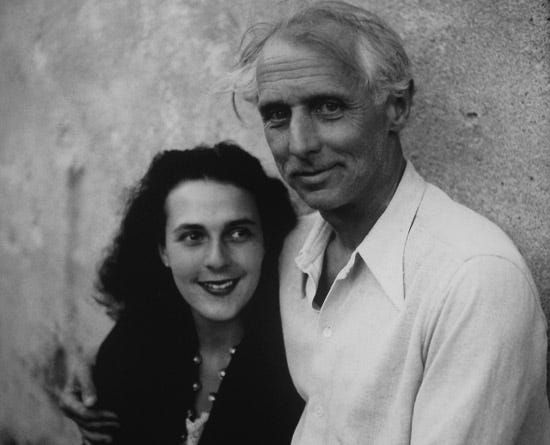
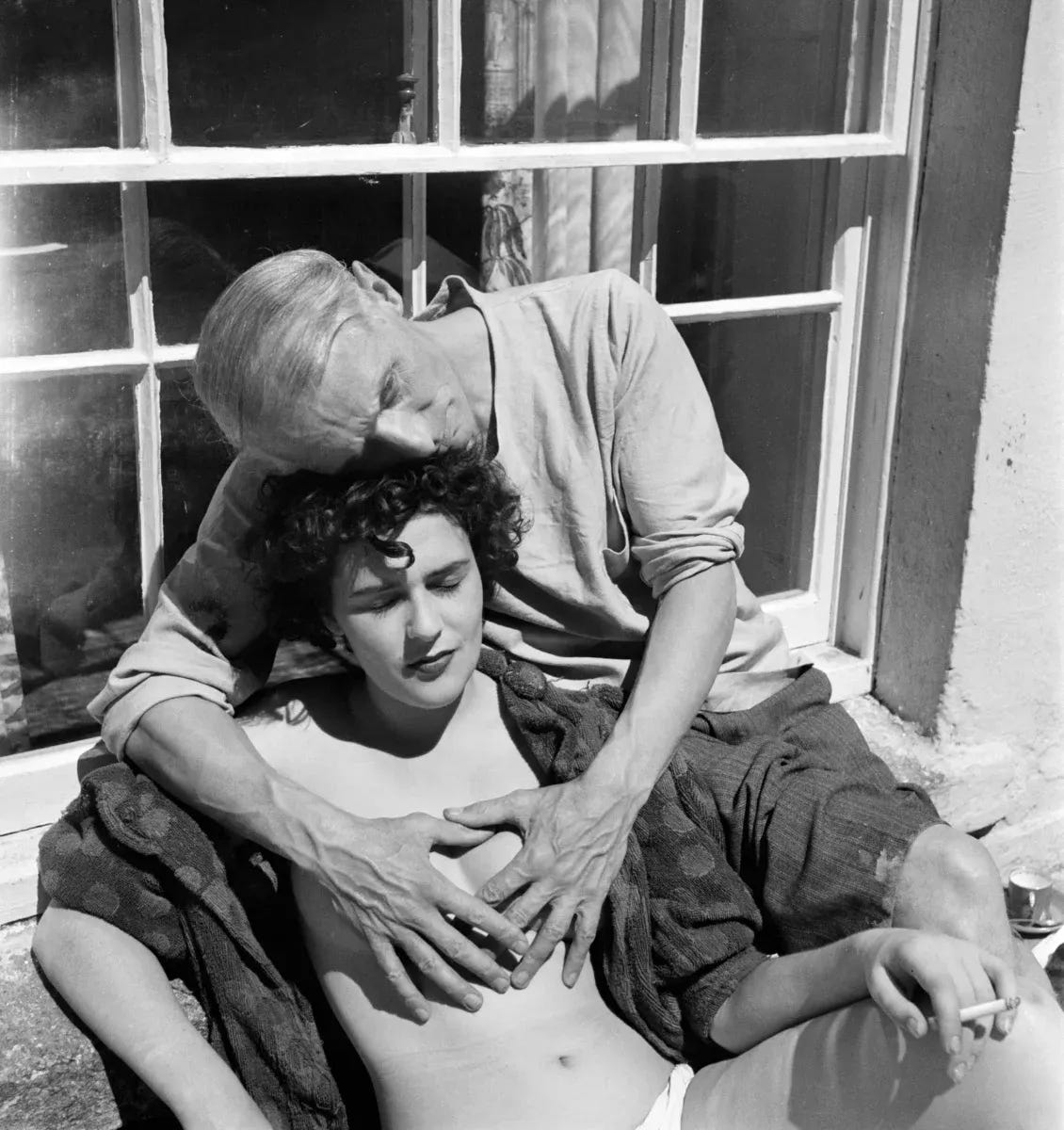
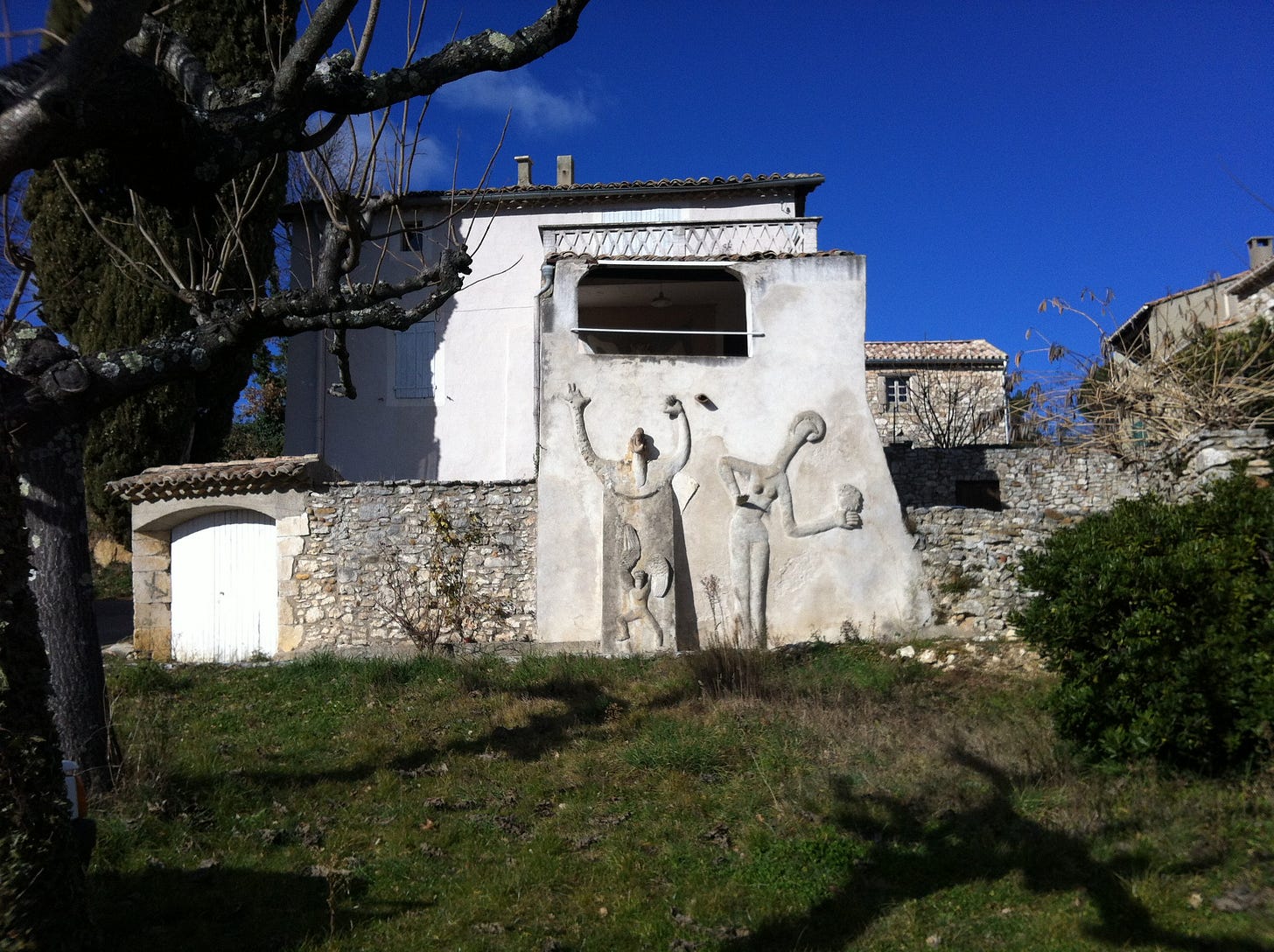
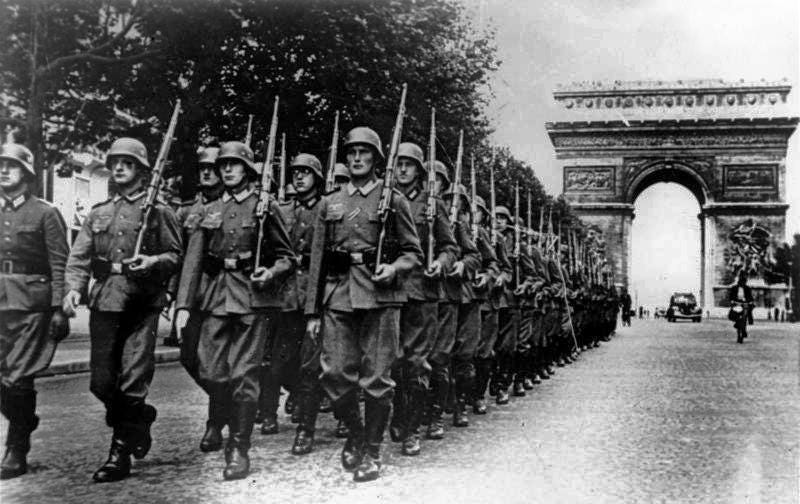

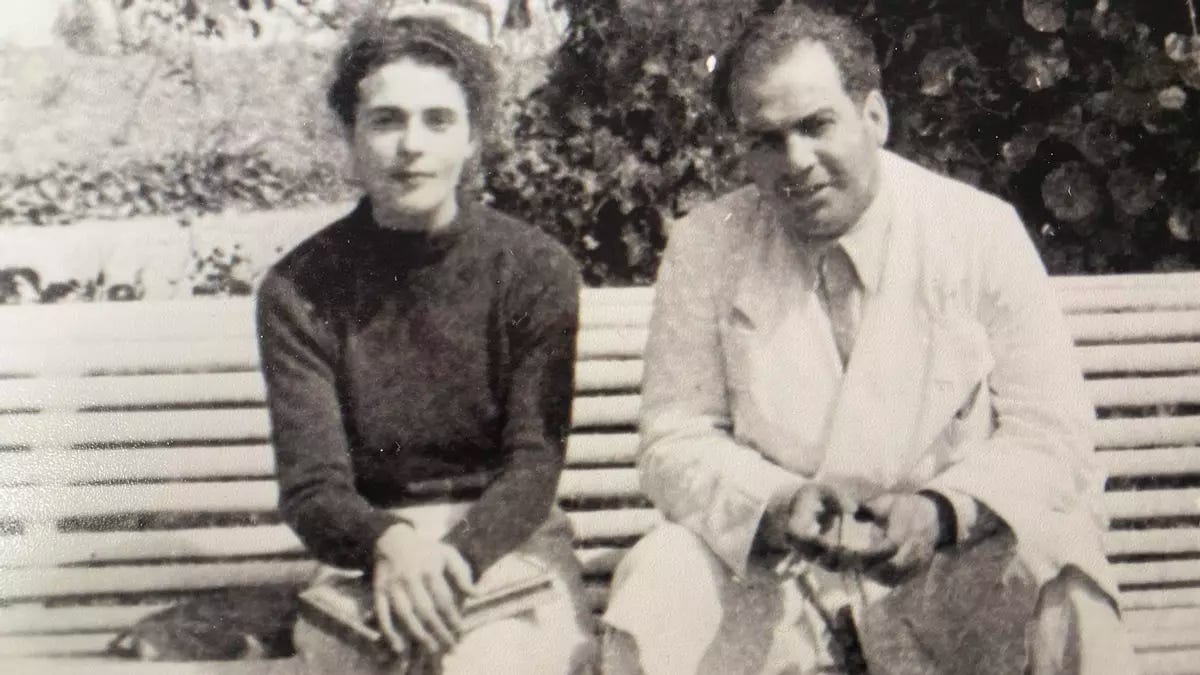
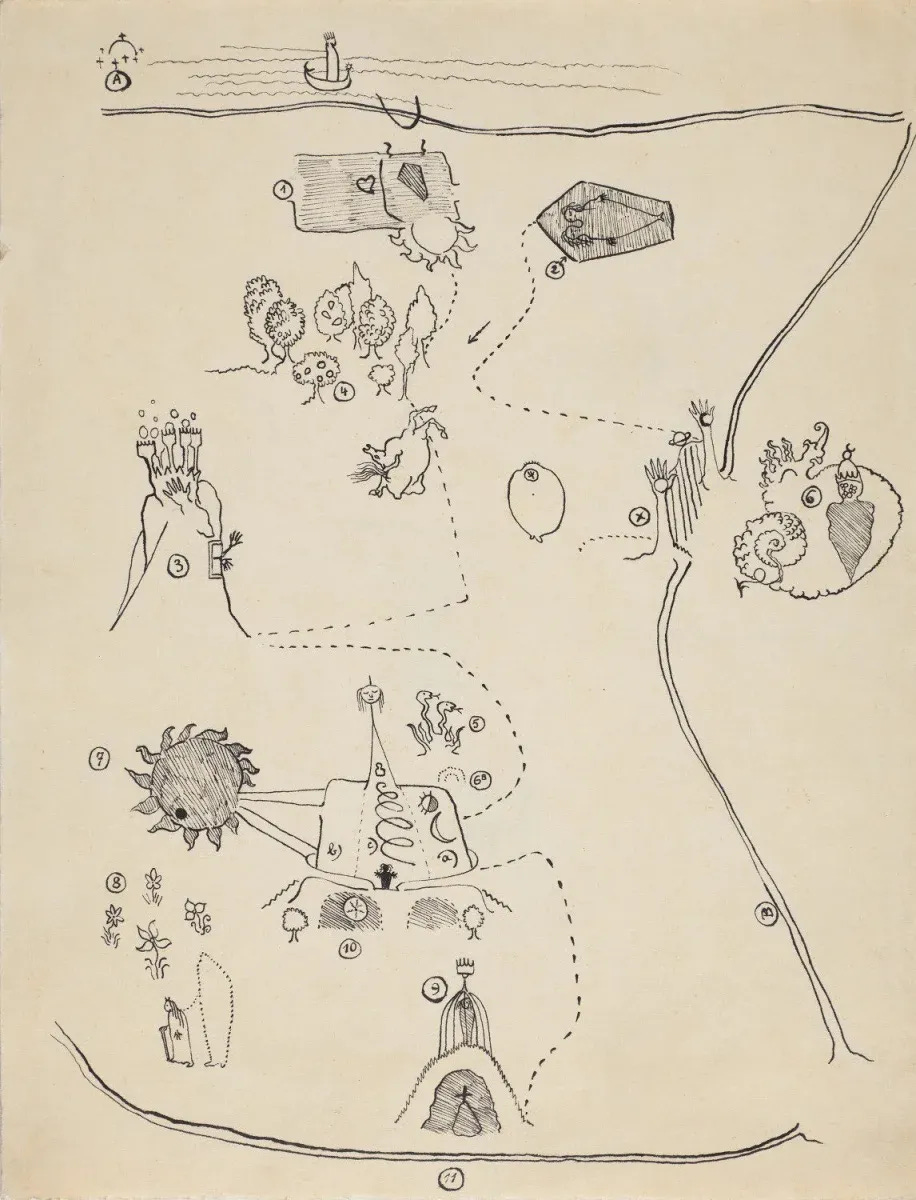
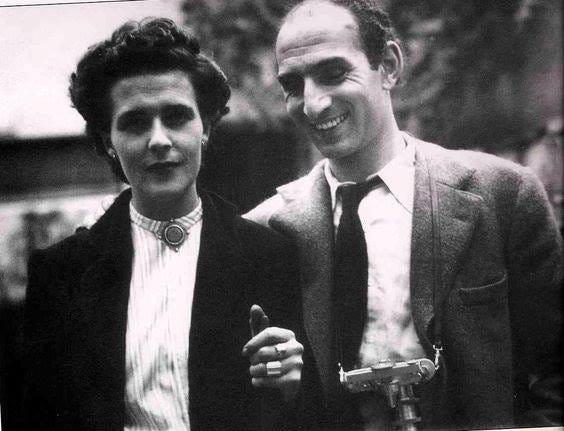
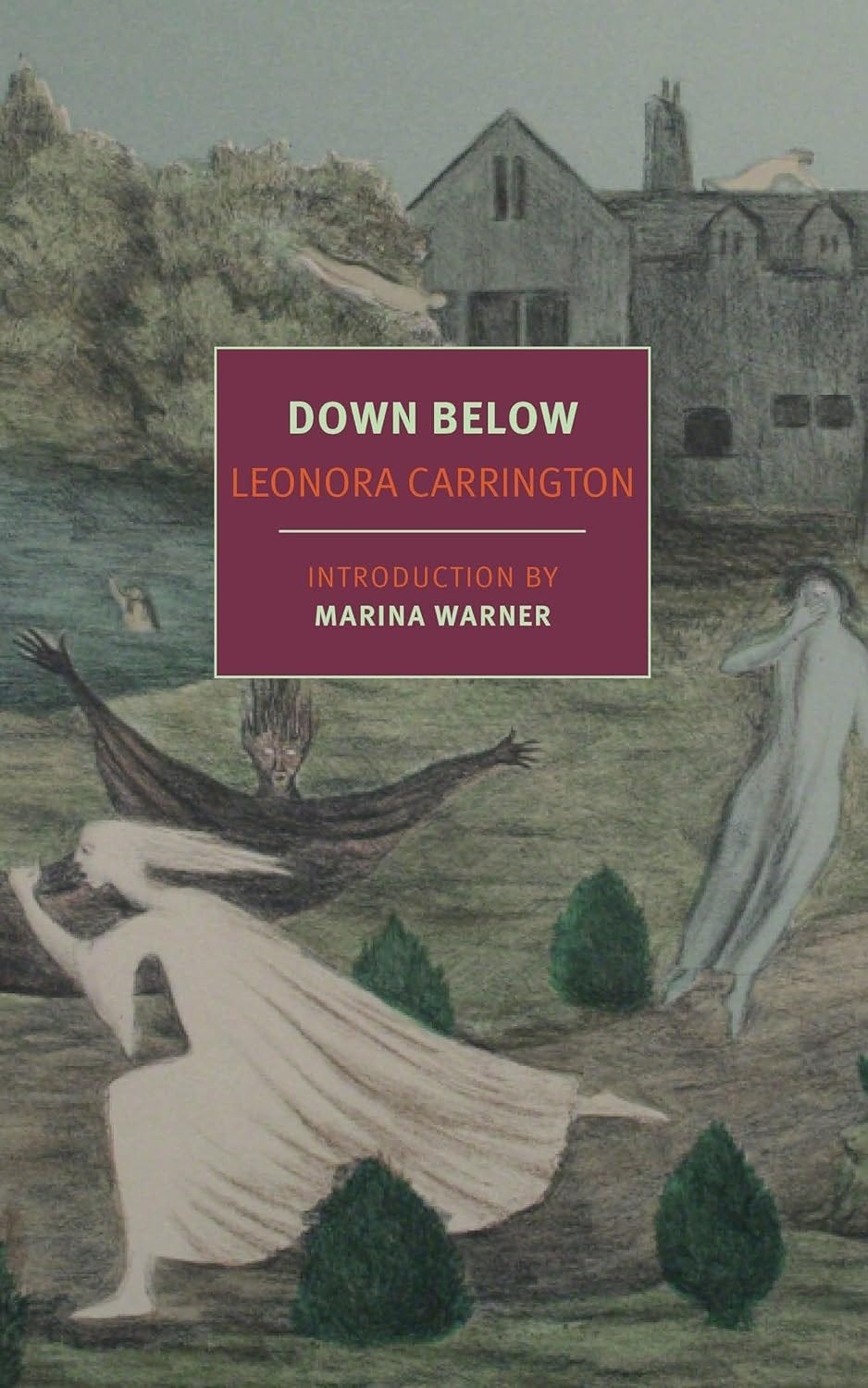
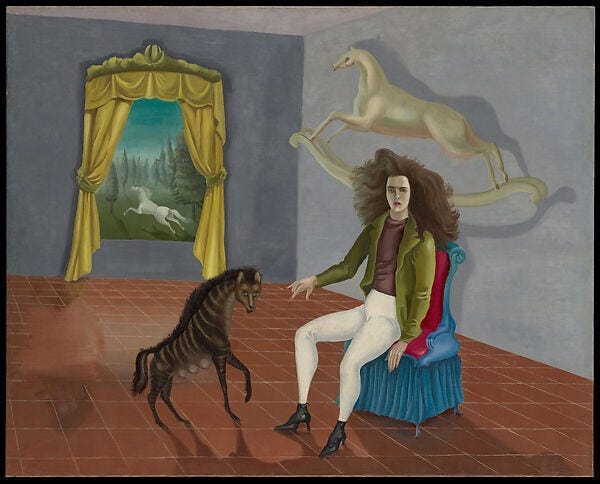
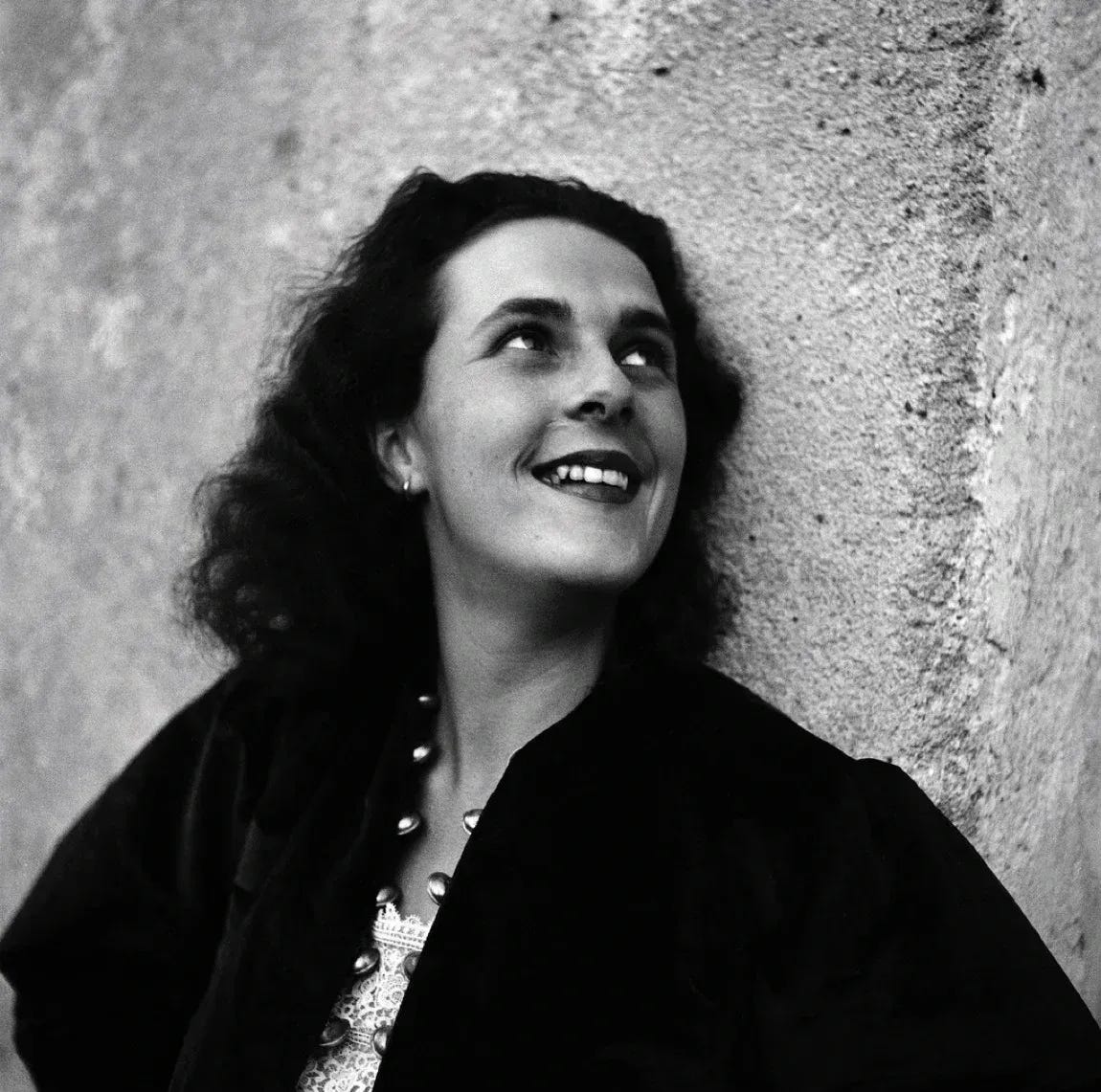



There was a retrospective of her art hanging in Peggy Guggenheim’s house in Venice a couple years ago. A lifetimes journey through those rooms.
Such an interesting read! For some reason in my mind I always connected Carrington with Bloomsbury? But I guess her dates were a little later. Thank you. And I’ll have to look for her book…